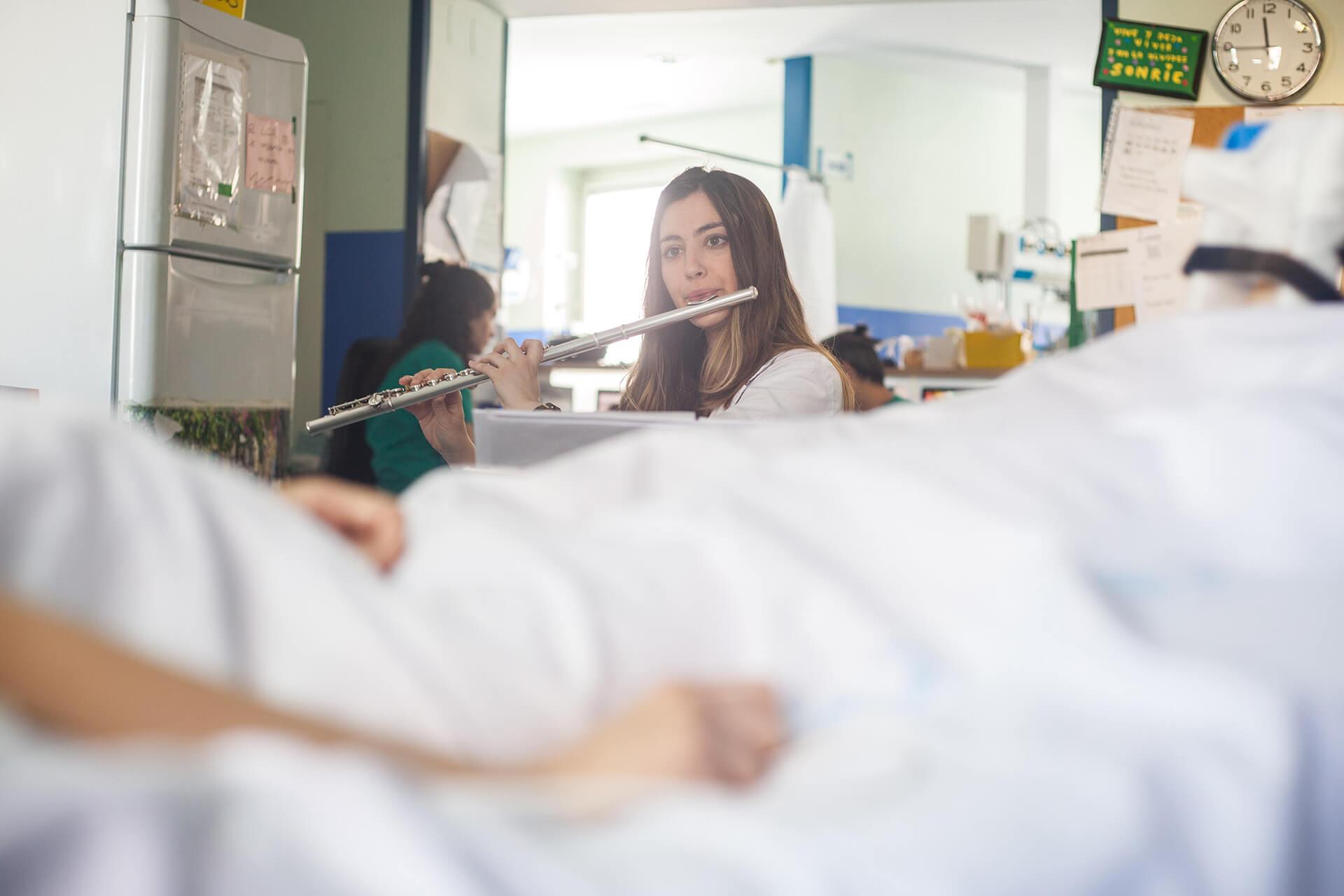The connection between music and health is nothing new. Every civilisation and nation in human history has been aware of the healing powers of music, and of the arts in general. Even in prehistoric times, people realised that music could ease anguish and believed in the divine origin of sound itself. The ancient Greeks used different vocal timbres to heal the sick.
The first scientific studies of the links between music and health were conducted in England and the United States after World War I, using music therapy to help soldiers cope with post-traumatic stress.
In the broader field of art therapy, which includes other arts in addition to music, research has progressed by leaps and bounds over the last two decades: studies on this subject now number in the thousands.
In November 2019, the World Health Organization (WHO), via its Regional Office for Europe, released a ground-breaking analysis of 900 scientific publications from around the world in its report What is the evidence on the role of the arts in improving health and well-being? In an unprecedented move, the WHO Health Evidence Network called upon European governments to incorporate the arts in their health and well-being policies, using them not only to prevent illness and promote good health, but also in the management and treatment of
illness. The WHO report concluded that “bringing art into people’s lives through activities including dancing, singing, and going to museums and concerts offers an added dimension to how we can improve physical and mental health,” according to Piroska Östlin, WHO Regional Director for Europe.
Although Europe as a region is slowly but steadily moving forward in this field, the pace of progress varies from one country to the next. For example, in the United Kingdom—which has already made great strides in applying artistic practices to healthcare—the concept of “arts in health” is already firmly established and has strong institutional support from every party in Parliament. The All-Party Parliamentary Group on Arts, Health and Well-being published a comprehensive report in 2017 on how the arts can be creatively used to improve personal health and well-being from infancy to old age. This British initiative is an excellent example of what can be accomplished if we “all pull together”.
In Spain, in September 2020 the Senate issued an institutional statement addressed to the Spanish government, urging it to consider culture an essential commodity. The original text is quite a statement of intent, indicating the direction we must take in the coming years: “We should include culture and the arts in the framework of healthcare, as music, art and cultural activities have great benefits for our bodies and our emotions.”

The Cochrane Library contains numerous studies and theories that describe the different effects of music and art on the human organism. These include:
– Physical effects: lowers blood pressure, heart rate and breathing rate and stimulates peristalsis, reducing nausea.
– Biochemical effects: increases number of neuromodulators and neurotransmitters, strengthens the immune system.
– Psychological/emotional effects: reduces anxiety and pain perception.
– Cognitive/intellectual effects: stimulates imagination and creativity and facilitates learning, memory and executive functions.
– Social effects: promotes dialogue and eases group tensions.
At Cultura en Vena, in addition to finding scientific evidence for some of these positive effects that music has on people, we also want to help achieve the priorities set out in Health 2020 (Health 2020. A European policy framework and strategy for the 21st century 20and in the WHO’s 13th General Programme of Work 2019-2023 . For all these reasons, we hope and trust that our work will continue to support the great collective effort of building a society where art and health go hand-in-hand.